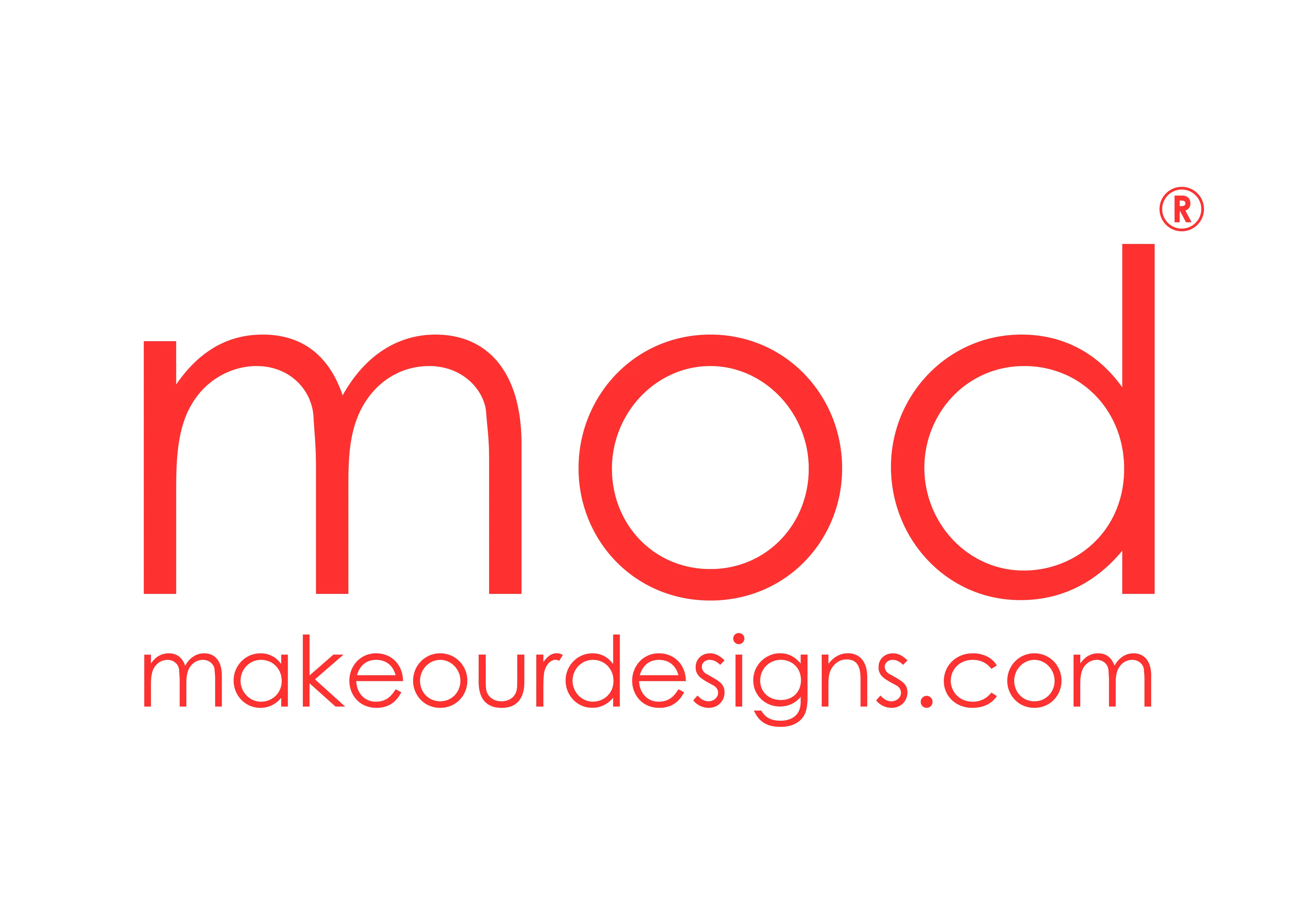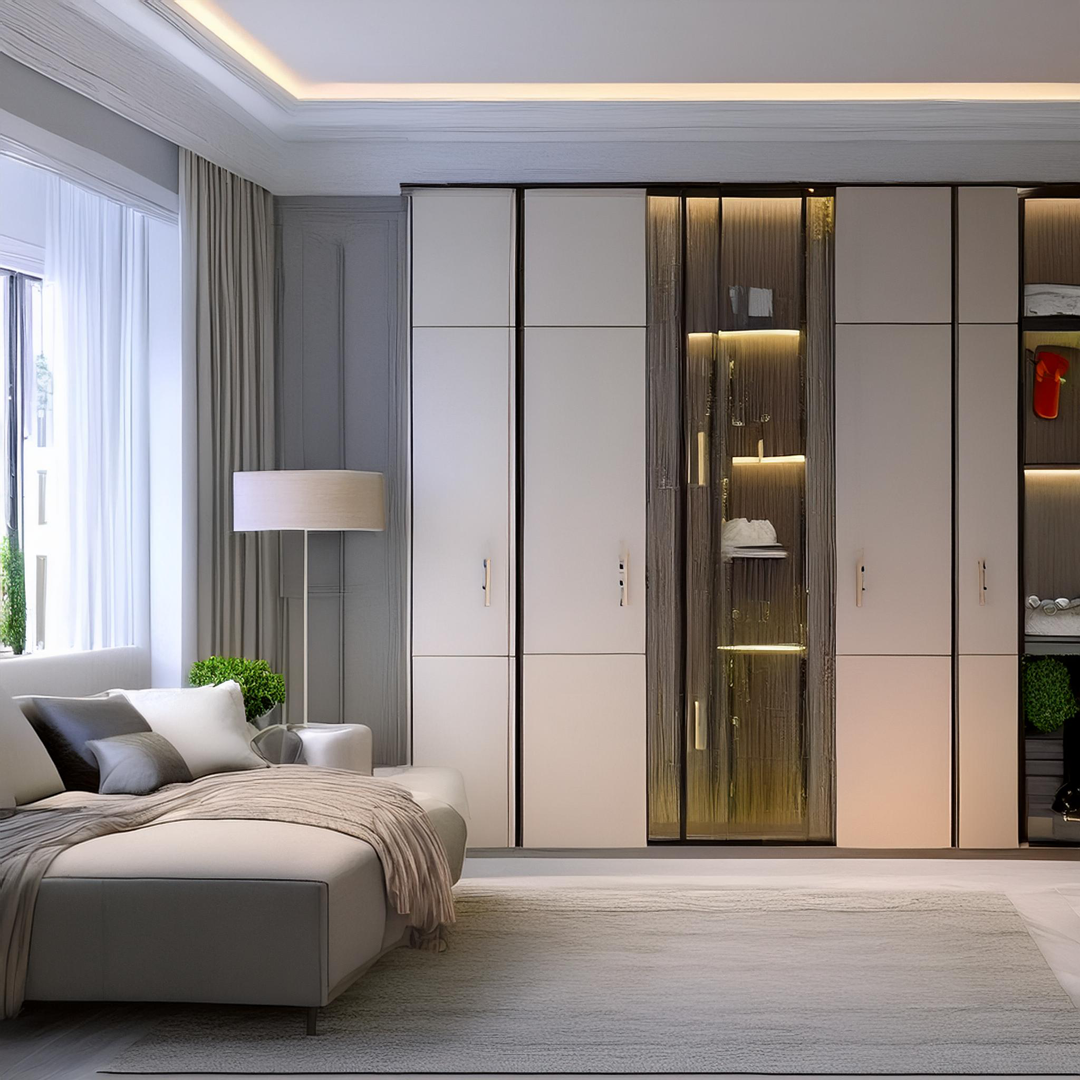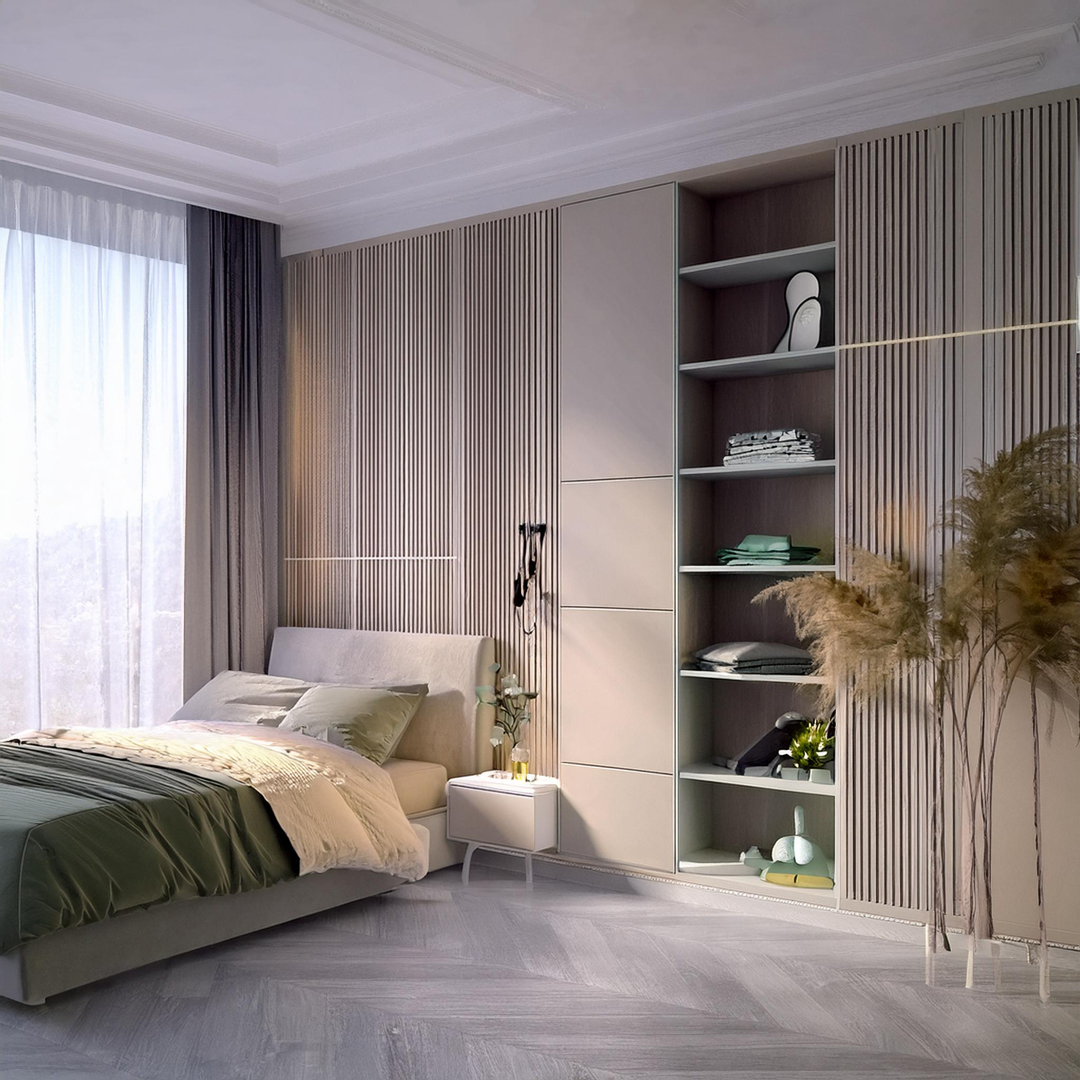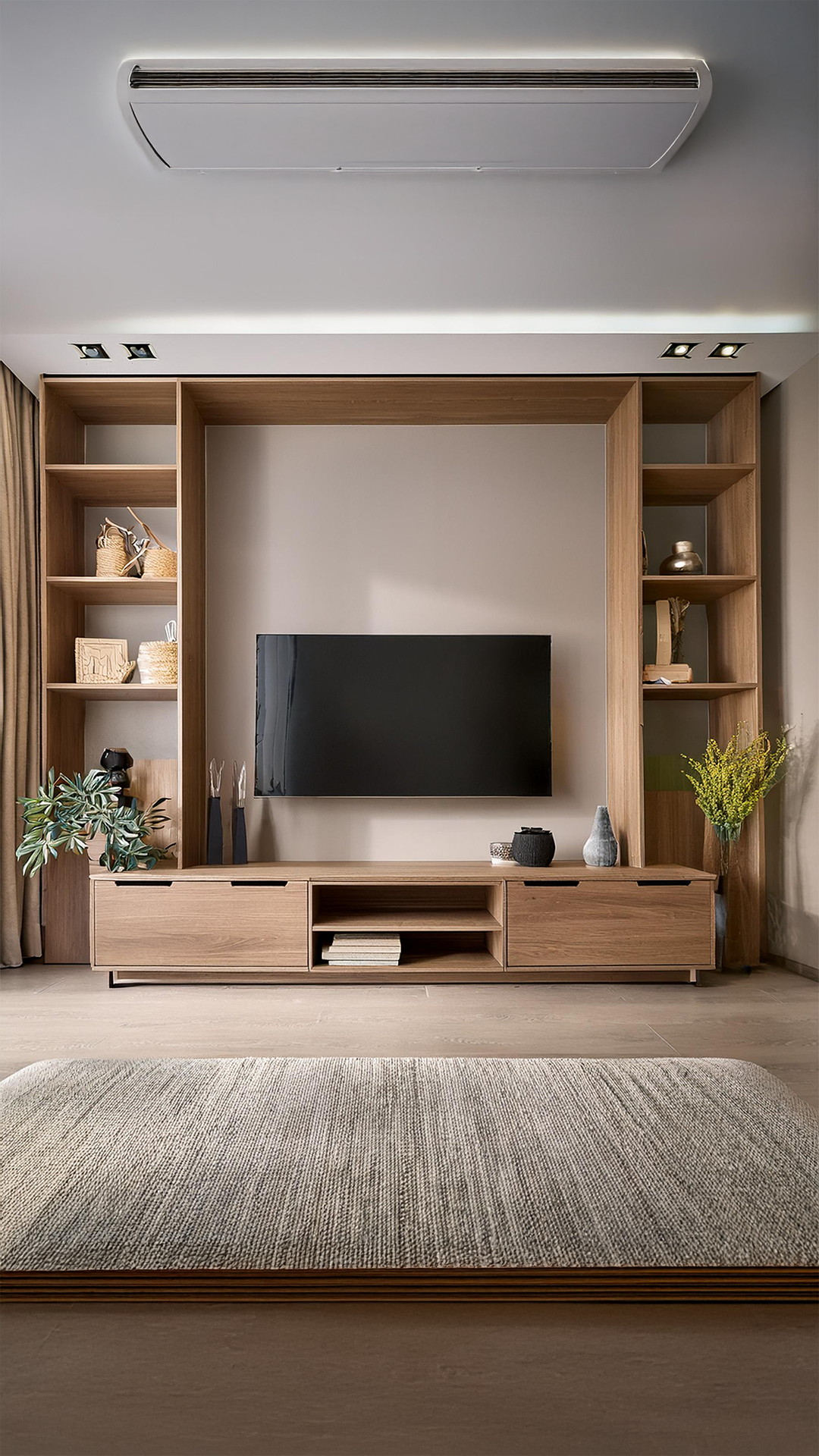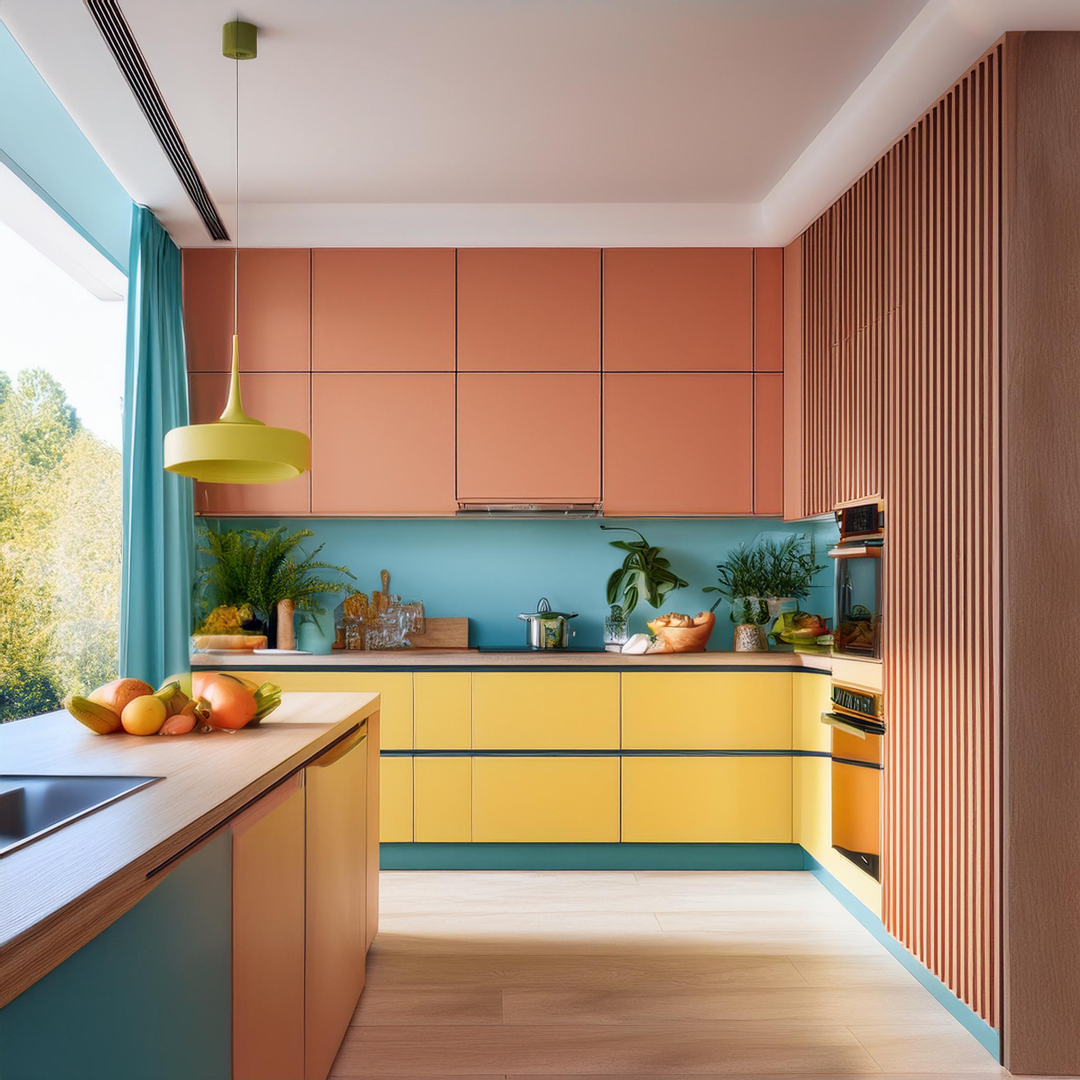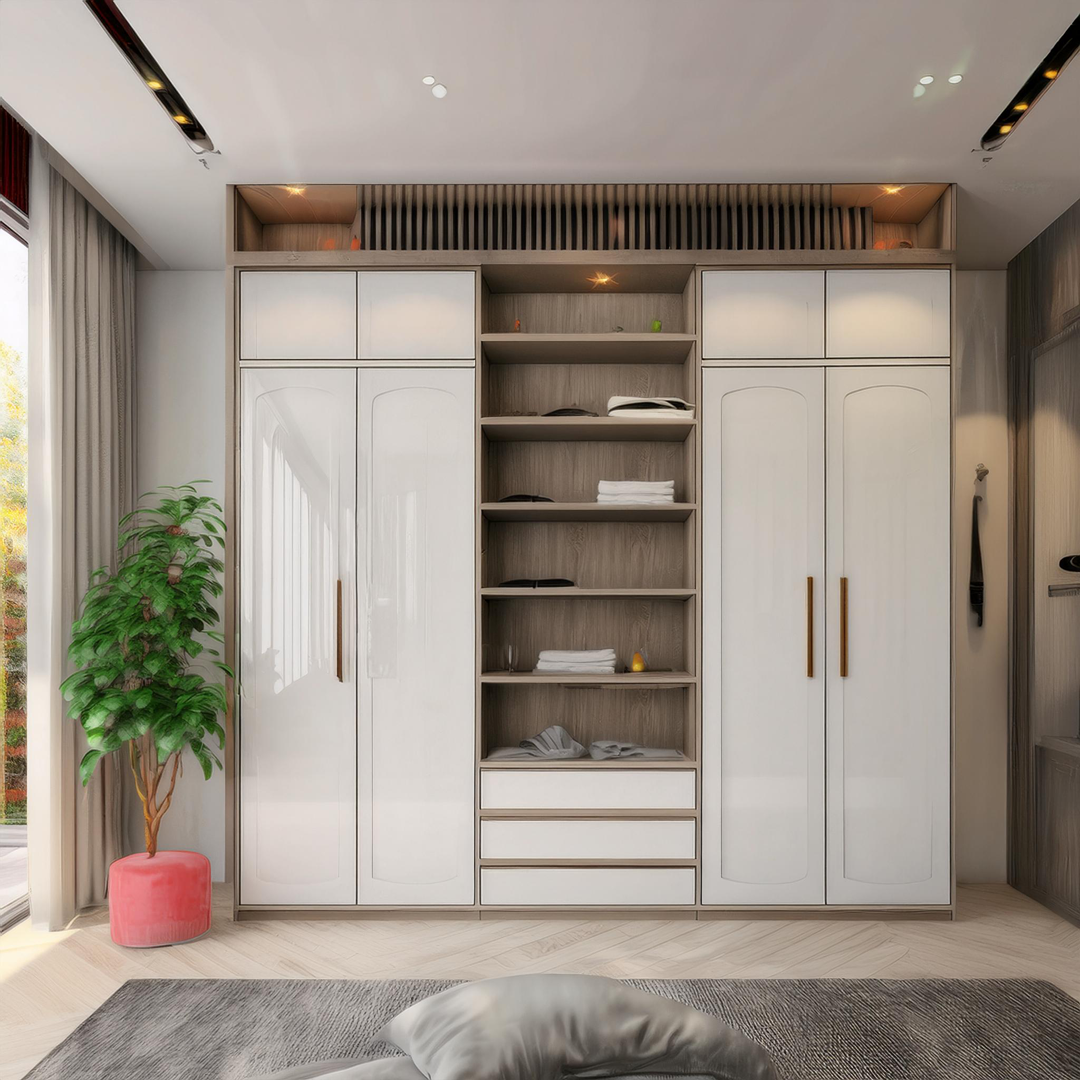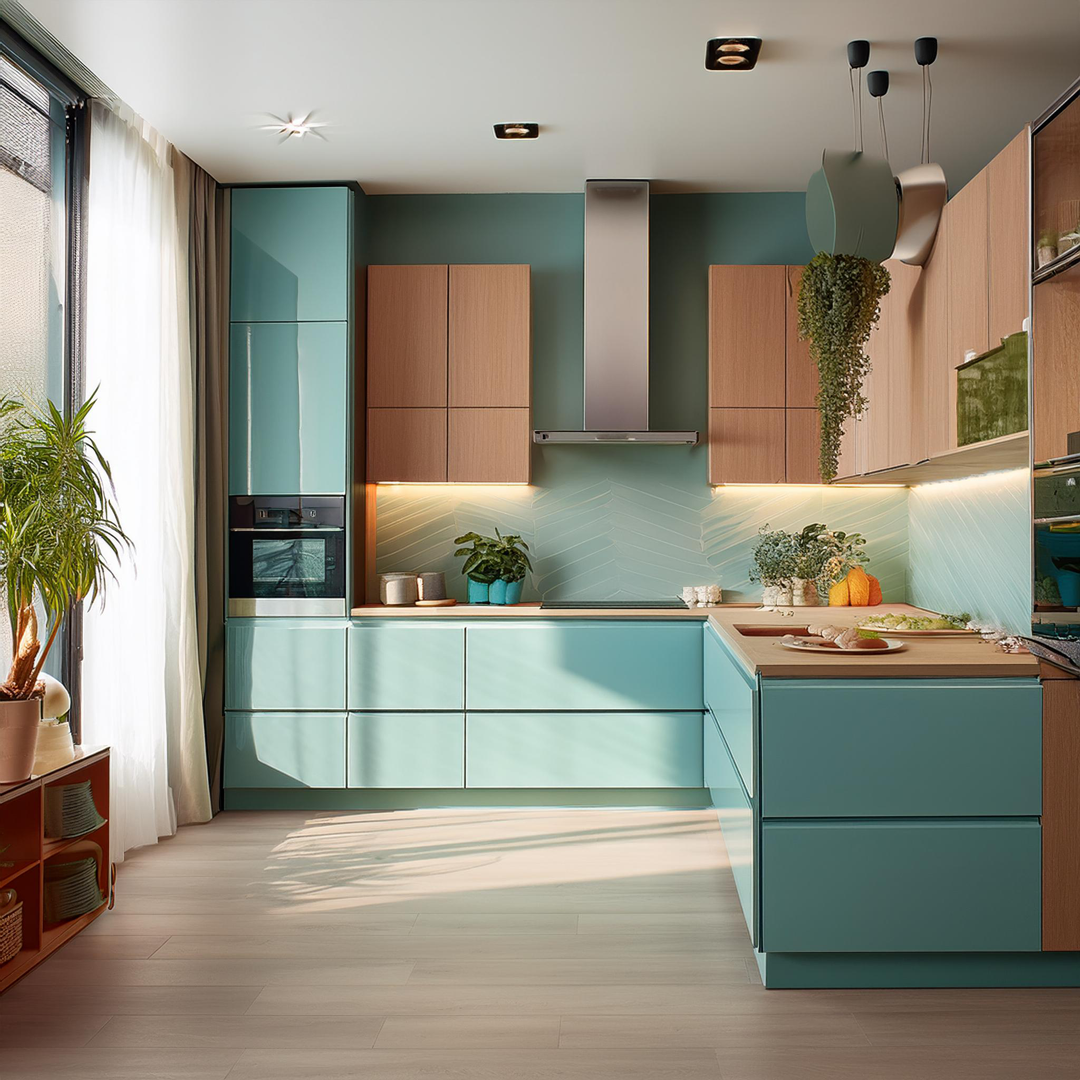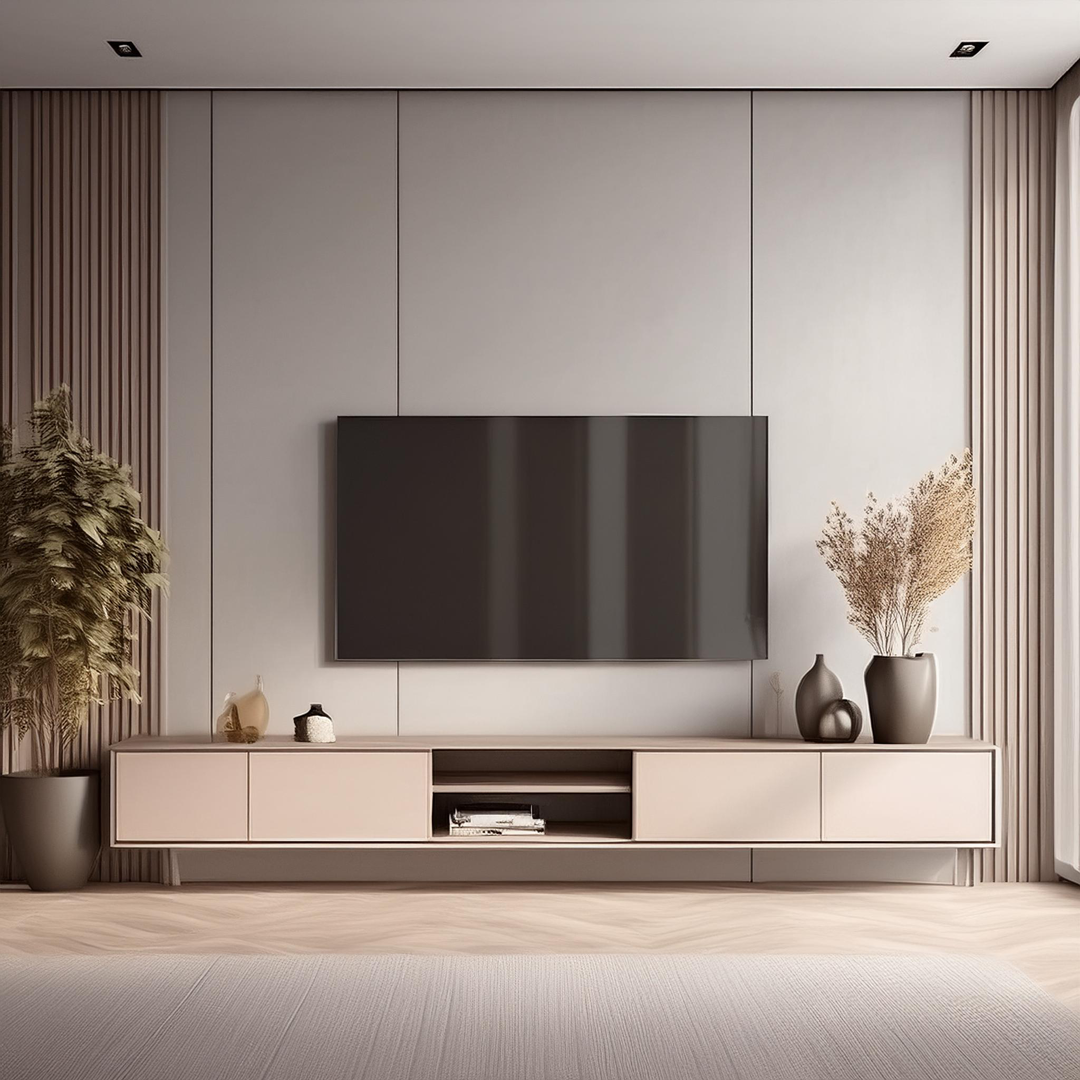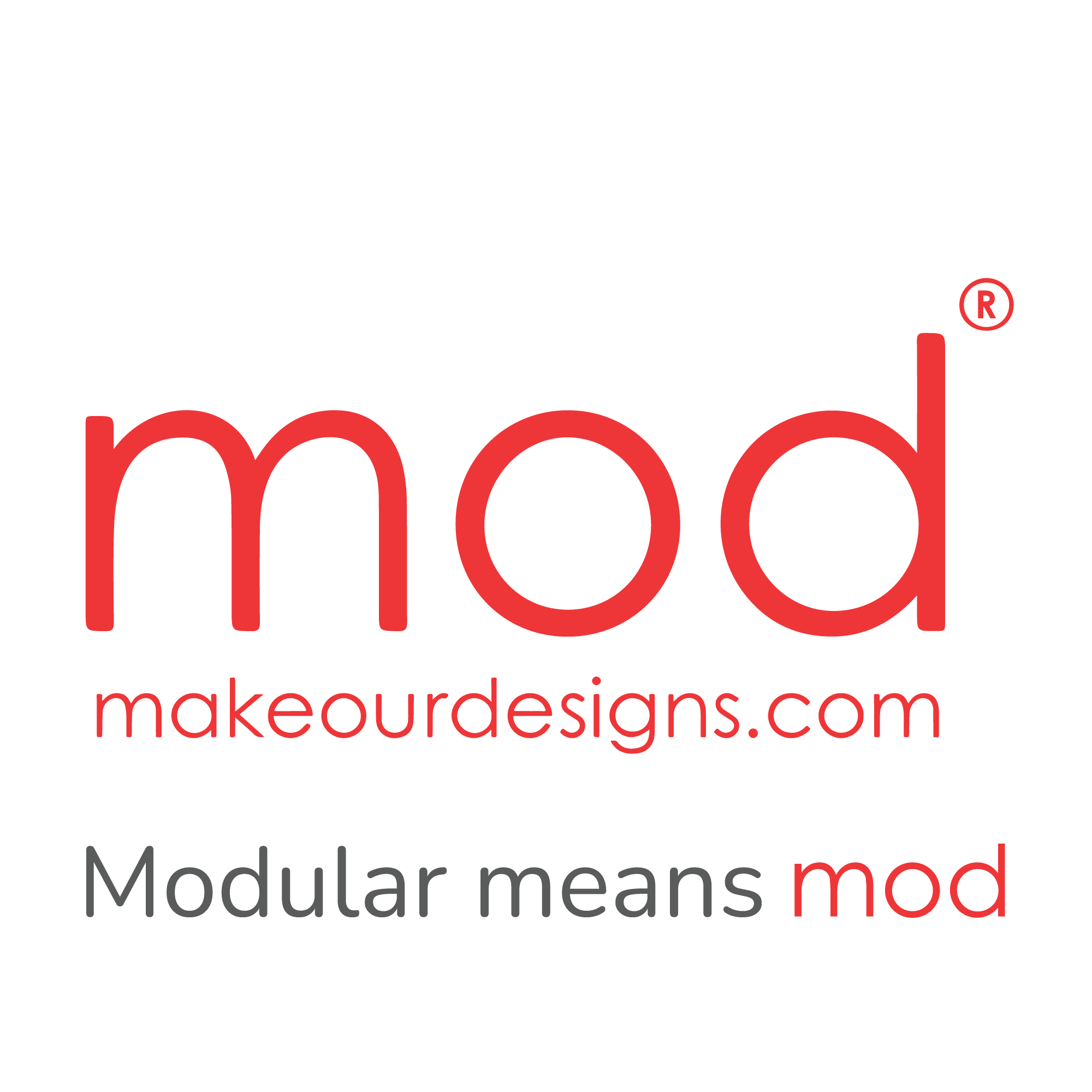Transform Your Entryway with Modular Storage Solutions The entryway is often the first impression of your home, setting the tone for the rest of the space. But it’s also one of the most functional areas, where you drop your keys, shoes, or bags. A cluttered or disorganized entryway can leave you feeling stressed as soon as you walk through the door or walk out. This is where modular storage solutions come into play—providing the perfect balance of functionality and style. Modular storage allows you to tailor your space to fit your specific needs and taste. Whether you have a small hallway or a spacious foyer, modular systems can help you maximize storage without sacrificing aesthetics. In this blog, we’ll explore how you can transform your entryway with modular storage solutions that offer both practical storage and an inviting, organized atmosphere. 1. Maximize Vertical Space with Modular Shelving In many homes, entryways tend to be small or narrow, which means it’s important to make use of vertical space to avoid cluttering up the floor. Modular shelving units can be stacked or arranged to create additional storage while maintaining a sleek and tidy appearance. ● Floating Shelves: Install floating modular shelves on the walls to hold small items like keys, mail, or decorative pieces. These shelves are perfect for creating a clean, streamlined look while providing easy access to everyday essentials. ● Stackable Units: Modular shelving that can be stacked in different configurations is another great way to use vertical space. Arrange the pieces to fit the height and dimensions of your entryway. You can create everything from simple wall-mounted storage for essentials like keys and bags, to full-height shelving systems that store shoes, hats, and other accessories. ● Open vs. Closed Storage: Depending on your needs, you can choose open modular shelving for easy-to-reach items or closed units with doors to hide clutter. For example, a closed modular cabinet can hold extra shoes or pet leashes, while open cubbies can be used for decorative items or things you need to grab quickly, like wallets or sunglasses. 2. Use Modular Storage Benches for Multi-Functionality A modular storage bench is a versatile piece that combines seating with storage, making it an ideal solution for entryways. It’s perfect for those times when you need to sit down to take off shoes or put on boots, but also want to keep the area tidy and organized. ● Under-Seat Storage: Many modular benches feature hidden storage beneath the seat, where you can store shoes, bags, scarves, and other accessories. Some designs even have built-in pull-out drawers or cubbies to maximize the amount of space available. ● Adjustable Seat Height: Modular benches often come with adjustable or stackable components, so you can change the seating height depending on your needs. If you want a taller piece for more storage, you can stack units, or opt for a lower bench for a more compact look. ● Integrated Hooks and Shelves: Some modular benches come with built-in hooks or shelves above the seating area, providing even more functionality. These hooks are perfect for hanging bags, or hats, while the shelves below can store shoes, baskets, or decorative items. 3. Create a Customizable Shoe Storage System Shoes are one of the most common items that clutter entryways. Modular furniture makes it easy to organize your shoes in a way that suits your personal style and needs. Instead of piling shoes by the door or having a bulky, mismatched shoe rack, modular storage lets you design a shoe storage solution that is both practical and aesthetic. ● Modular Shoe Racks: Use modular shoe racks that can be stacked or arranged in rows to accommodate multiple pairs of shoes. These racks can be customized in terms of height, length, and depth to suit your available space. You can go for open shelving for easy visibility, or closed units to keep shoes out of sight. ● Shoe Cabinets with Adjustable Shelves: For a cleaner, more organized look, opt for shoe cabinets with adjustable shelves or drawers. These modular units allow you to adapt the space for different shoe types, from flats to boots, while keeping everything tucked away neatly. ● Hidden Storage Solutions: If you prefer to keep your entryway looking sleek and minimal, modular storage systems with hidden compartments are a great option. Look for bench units, cabinets, or ottomans with lift-up tops, which can double as storage for shoes without disrupting the flow of your entryway design. 4. Utilize Modular Storage Cubbies for Organization For a more structured and organized entryway, modular cubby systems are ideal. These pieces allow you to separate items into compartments, making it easy to store everything from shoes to hats to pet accessories. They also offer a visually appealing way to keep the entryway neat and tidy. ● Stackable Cubby Systems: Modular cubby systems can be stacked and rearranged to fit your space perfectly. You can use individual cubbies to store shoes, bags, or keys, or combine them into a larger unit for more extensive storage needs. These cubbies come in a variety of sizes, so you can customize the arrangement depending on your specific needs. ● Open or Closed Cubbies: Open cubbies work well for frequently used items, while closed units are great for hiding away things like shoes or scarves. You can even add fabric bins or baskets to open cubbies for a more streamlined look, helping you store small items while keeping them out of sight. ● Add Personal Touches: Modular cubbies also provide the perfect opportunity to add a personal touch to your entryway. Store decorative pieces, like plants or artwork, alongside your functional storage, creating a visually balanced and welcoming space. 6. Create a Stylish Entryway Console An entryway console is a great way to add both style and function to your entry. Modular consoles offer the flexibility to store keys, mail, and other small items while also providing a surface for decorative pieces like a vase or bowl. ●
The Psychology Behind Modular Design: Creating Harmonious Spaces That Adapt to You
The Psychology Behind Modular Design When it comes to designing a living space, psychology plays a crucial role in how we feelwithin those spaces. The colors, shapes, layouts, and even the way furniture is arranged cansignificantly influence our mood, productivity, and well-being. This is where modular designsteps in—not just as a trend, but as a psychological strategy to create adaptable andharmonious environments that support a variety of needs and personalities. Modular design speaks the language of flexibility. It’s about crafting spaces that are not onlyvisually appealing but also intuitively functional, adjusting to the ever-changing demands ofan individual’s modern life. But there’s more to it than simply rearranging a few pieces offurniture—modular design taps into deeper psychological principles to help you create aspace that reflects your lifestyle while enhancing your mental and emotional well-being. Inthis blog, we explore the psychology behind modular design and how it fosters balanced,adaptable environments that truly support the way you live. 1. Flexibility: It provides the power of control and autonomy One of the key psychological benefits of modular design is flexibility—the ability topersonalize and reconfigure your space as your needs change. The human desire forcontrol is a strong motivator in how we shape the environments around us. A flexible layoutallows you to take command of your space, making choices that align with your personalpreferences, rather than being limited by rigid, predetermined designs. ● Adapting to Changing Needs: As life shifts—whether through a growing family, newhobbies, or work-from-home arrangements—the need for adaptable furniturebecomes paramount. Modular design allows you to rearrange or expand your livingspace with ease. This flexibility not only meets practical needs but also provides asense of empowerment, reducing stress and giving you a feeling of control overyour environment. ● Personalization as Empowerment: The ability to personalize your space throughmodular design means that you can create a home that feels truly yours. This senseof control and autonomy contributes to feelings of safety, comfort, and belonging,all of which are foundational psychological needs. Personalizing your livingenvironment boosts your overall sense of well-being and satisfaction. 2. Flow and Harmony: enhancing emotional well-being The way we arrange furniture and the spatial flow of a room directly impacts our mood andemotional health. Modular design principles focus on creating fluid, harmonious spaces thatpromote a sense of calm and balance—essential for reducing anxiety and fosteringrelaxation and provide a sense of sanity in the current environment. ● Open, Flowing Spaces: Modular design allows for open-plan layouts where theflow between different areas feels seamless. This fluidity can have a profoundpsychological effect. Cluttered or cramped spaces can evoke feelings of stress ordiscomfort, whereas spaces that allow for natural movement and clear sightlinespromote relaxation and calm. ● Creating Flow with Flexibility: Modular furniture systems often allow for continuoustransitions between spaces, like turning a living room into a workspace ortransforming a bedroom into a relaxing reading nook. The ability to adjust your layoutbased on function helps establish a sense of order, which is crucial for mental clarityand peace. Creating harmonious transitions between spaces ensures your homebecomes a retreat that nurtures your mind, soul and body. ● Seamless Transitions: The flexibility of modular design helps create spaces thatflow with ease, transitioning naturally between zones of activity (e.g., work, rest,play). The psychological benefit here is substantial: the easier it is to move throughyour space and interact with your surroundings, the less overwhelmed you feel.Spaces that provide this balance allow for a smoother mental shift between tasks,improving productivity and relaxation. 3. Simplicity and Minimalism: Reducing Cognitive Load Our brains are wired to feel overwhelmed by clutter. According to cognitive psychology, themore objects and distractions in our environment, the harder it is for us to focus and feel atease. Modular design often aligns with minimalist principles, offering a streamlinedapproach that reduces clutter and cognitive load. ● Clean Lines and Simple Forms: Many modular pieces feature clean lines andsimple shapes that are visually calming. The minimalist aesthetic, which is a keyfeature of modular design, helps reduce visual noise and allows the brain to focus onwhat truly matters. By avoiding clutter, modular furniture promotes clarity ofthought, making it easier to relax, concentrate, and enjoy your space. ● Smart Storage Solutions: Modular furniture systems often integrate hiddenstorage, which encourages a decluttered environment. Hidden compartments andmulti-functional pieces like storage ottomans or modular shelving units allow you tokeep items organized and out of sight, ensuring that you maintain a tidy space thatpromotes mental clarity. The less clutter, the less your brain has to process, whichleads to a sense of tranquility and focus. ● Sense of Calm and Order: The simplicity of modular design helps maintain a senseof order, which reduces feelings of chaos or overwhelm. When a room is unclutteredand organized, it allows your mind to relax and feel more centered, enhancingemotional well-being. 4. Adaptability: Supporting a Variety of Lifestyles Humans are inherently adaptable, and so too is modular design. Modular systems areparticularly well-suited for the diverse lifestyles we lead today, offering a way to createspaces that change in response to our evolving needs. ● Creating Spaces for Multiple Purposes: In modern life, a single room may need toserve multiple purposes—like a home office, guest room, or even a workout space.Modular design makes it easy to create multi-functional areas within your home.For instance, a modular sofa that doubles as a bed, or a wall unit that can switchfrom holding books to displaying decorative art, can quickly adapt to your needs. ● Supporting Work-Life Balance: For those working from home, modular furnitureoffers flexibility to create an ergonomic workspace that can be adapted as needed.Whether you need a quiet office area one day or a social space for entertaining thenext, the versatility of modular design helps you carve out areas that support bothyour professional and personal lives without feeling overwhelmed orcompartmentalized. ● Fostering Family and Social Connections: As families grow and lifestyles shift, theability to change your home to meet new demands is crucial. Modular designaccommodates the need for adaptability, whether you’re adding more storage aschildren’s toys accumulate, rearranging seating for a family movie night, or adjustingyour
Modular Furniture for Renters: How to Personalize Your Space Without Making Permanent Changes
Modular Furniture for Renters Renting a home or apartment offers plenty of freedom and flexibility—without the long-termcommitment of homeownership. However, one of the challenges renters face is the inabilityto make permanent changes to their living spaces. Whether it’s painting the walls, drillingholes, or installing custom cabinetry, many renters are usually restricted by their leaseagreements when it comes to home improvements. So, how can you personalize yourspace without risking your security deposit or dealing with the hassle of restoration? Your clear answer lies in modular furniture. This innovative design approach gives rentersthe ability to create a comfortable, functional, and stylish home without the need forpermanent alterations. In this blog, we’ll explore how modular furniture can be agame-changer for renters looking to personalize their space while still adhering to the rulesof their lease and living the way you wish. 1. Adaptable to Your Space and Needs Modular furniture is designed to be flexible and customizable, which makes it ideal forrenters who may not know exactly how their space will evolve over time. Unlike traditionalfurniture that often requires you to settle for a fixed layout, modular furniture can bereconfigured and adapted to suit changing needs. ● Change Room Layouts: With modular seating, such as sectional sofas, you canadjust the layout to fit the dimensions of your room, creating a layout that works bestfor your space. If you need more seating for a party? Simply add an extra piece. Incase you move into a smaller apartment? Downsize by removing a few sections. ● Temporary Adaptation: If you’re moving into a new space, you can easily take yourmodular furniture with you and configure it to suit the new layout. This adaptabilitymeans you don’t have to worry about outgrowing your furniture when your livingspace changes. 2. Personalize Without Drilling or Altering the Walls For renters, making holes in the walls is often a big no-no, and painting walls or installingpermanent fixtures can be a challenge. Modular furniture can help you personalize yourspace without having to make irreversible changes to the structure of the room. ● Modular Shelving: Modular shelving systems allow you to store and display itemswithout the need to drill into the walls. Many modular shelving units are designed tostand freely, leaning against the wall or occupying an entire corner. You can choosefrom open shelves for books, closed storage for more private items, orcustomizable storage towers that fit perfectly in tight spaces. ● Freestanding Units: Modular furniture like bookshelves, storage cubes, andentertainment units can stand independently without needing to be attached towalls. They can easily be moved around to change up your room’s look or adjust toyour needs. Plus, they provide a sleek, modern aesthetic that can elevate the look ofany room without permanent fixtures. ● Wall-Mounted Alternatives: If you are craving vertical storage but cannot drill, youcan opt for adhesive wall-mounted shelves or peel-and-stick hooks tocomplement your modular furniture. These options don’t damage walls and can beeasily removed when you move out. 3. Add Color and Texture with Modular Fabrics Another major advantage of modular furniture is the ability to customize the fabrics andfinishes. Unlike traditional furniture that might be limited to a set color or material, manymodular furniture pieces allow you to choose from a wide variety of colors, textures, andpatterns, letting you tailor your space to your personal style. ● Changeable Upholstery: Some modular sofas, armchairs, or ottomans come withremovable, washable covers that can be swapped out whenever you want a newlook. This gives renters the freedom to change the entire aesthetic of their livingspace—whether you want to add a pop of color, experiment with patterns, or choosemore neutral tones to fit your décor. ● Pillows and Throws: For an even easier and more affordable way to personalizeyour modular furniture, use decorative pillows, throws, and blankets. These itemscan be easily swapped out to suit the season, your mood, or the latest trends, givingyou maximum flexibility without the commitment. ● Layered Textures: With modular furniture, you can incorporate different texturessuch as velvet, linen, leather, or cotton. Mix and match textures in your modularsofa or lounge area to add depth and dimension to your room. These textures bringpersonality and comfort to your space without making permanent changes. 4. Maximize Storage Without Built-In Closets In many rental homes or apartments, closet space may be limited, and often, renters aren’tallowed to install custom storage solutions. Modular furniture is an excellent way to createadditional storage space while keeping your belongings organized and accessible. ● Modular Storage Units: Opt for modular storage units like cabinets, bookshelves,and storage benches that can be placed wherever you need them. These piecescome in a variety of shapes and sizes, so you can select ones that maximize youravailable space. You can stack them, arrange them side-by-side, or use them todivide areas within an open-plan room. ● Modular Bed with Storage: If you’re short on closet space, look for a modular bed with storageframe with built-in drawers or lift-up storage underneath. These beds offer a hiddenstorage solution that’s perfect for seasonal clothing, shoes, or extra bedding,ensuring that your room stays organized and clutter-free without taking up additionalspace. ● Versatile Storage Bins and Baskets: Modular pieces can often incorporate storagebins or baskets that you can easily swap in and out as needed. These bins can beplaced under a modular sofa, stacked in a shelving unit, or used in conjunction withother modular furniture to create additional storage in places where it’s hard to findspace. 5. Create Multi-Functional Zones for Small Spaces Many renters live in small spaces, where every inch counts. Modular furniture helps youmake the most of your limited square footage by creating multi-functional zones that servedifferent purposes without overwhelming the room. ● Living Room to Office: If you need a space to work but don’t have a separate homeoffice, modular furniture can help you carve out a functional workspace in your livingroom or bedroom. Modular desks and chairs can be easily arranged, allowing you tocreate a dedicated study nook that’s compact and practical. When not in use, thedesk can simply be folded away
Transform Your Bedroom with Modular Design: Sleep, Study and More
Transform Your Bedroom with Modular Design The bedroom is often considered the most personal space in our home, serving as a retreatfor rest, relaxation, and sometimes, even work or study. As our lifestyles are becomingincreasingly dynamic, so too must the rooms we live in. With modular design, yourbedroom can be transformed into a multi-functional space that adapts to yourneeds—whether that’s sleeping, studying, exercising, or simply unwinding after a long day. If you’re looking to make the most of your bedroom, modular furniture offers the flexibility,functionality, and style to create a personalized space that works for you. Here’s how youcan transform your bedroom into a dynamic sanctuary with modular design. 1. Maximize Space with Multi-Functional Furniture In bedrooms, every inch counts. Modular furniture allows you to combine functionality andstyle without overcrowding your room with bulky pieces. Here are some ways modulardesign maximizes space:● Modular Beds with Storage: Instead of a traditional bed frame that only provides aplace to sleep, opt for a modular bed with integrated storage. Many modular bedsoffer drawers under the bed or lift-up storage compartments that let you storeseasonal clothing, extra bedding, or even shoes. This is an excellent solution fororganizing your space and keeping it clutter-free.● Foldable or Expandable Components: Choose a modular bed with a foldable orexpandable design. When not in use, parts of the bed can be folded away, freeingup valuable floor space for other activities. Some designs also allow you to adjust thebed’s height to create more storage underneath.● Modular Desks: Modular desks offer flexibility for those who use their bedroom as astudy or work area. Look for desks with adjustable heights or components that canbe easily added or removed, giving you the freedom to tailor your workspace to yourneeds. A small corner desk can be expanded into a full work area, and somemodular desks include hidden compartments to store office supplies or electronics. 2. Create Zones for Rest and Work In many modern homes, the bedroom is no longer just a space for sleeping. Whether you’reworking from home, studying, or even practicing yoga, your bedroom needs to serve multiplepurposes. Modular furniture allows you to seamlessly divide your bedroom into distinctzones without sacrificing space.● Work/Study Area: A modular shelving unit or a floating desk can help you carveout a dedicated workspace within your bedroom. With a modular desk system, youcan add or remove pieces based on your needs—perhaps incorporating bookshelves, drawers, or even a bulletin board as part of your desk layout.● Reading Nook: Create a cozy reading nook by adding a lounge chair or ottomanthat can easily be rearranged. Combine it with a modular bookshelf or wall-mountedshelving to create a mini-library within your bedroom. When not in use, the chair canbe moved to another part of the room or tucked into a corner to create more space.● Relaxation Area: Modular design isn’t just about work and study—it’s also aboutrelaxation. Add a modular sofa or sectional that can be rearranged into acomfortable lounge area where you can unwind, watch TV, or do some lightstretching. Modular sofas often come with adjustable backrests or recliningsections that offer ultimate comfort, making them perfect for winding down at the endof the day. 3. Efficient Storage Solutions to Keep Clutter at Bay A key benefit of modular furniture is its ability to offer smart storage solutions that help keepyour bedroom organized. Whether you have a spacious master bedroom or a smallapartment bedroom, modular design can help you maximize storage without overcrowdingthe room.● Modular Closet Systems: If your bedroom has limited closet space, consider amodular wardrobe or closet system that can be customized to fit your room’s sizeand shape. Modular wardrobes allow you to choose from various configurations,including shelves, drawers, and hanging rods, making it easy to create a system thatsuits your needs.● Modular Storage Cubes or Bins: For quick organization, modular storage cubesare an excellent option. You can use them to store shoes, accessories, or evenbooks. These cubes come in various sizes and can be stacked or arranged in anypattern that fits your space. They can even double as end tables or additional seatingif needed.● Wall-Mounted Shelves: In a small bedroom, wall-mounted shelving is a great wayto take advantage of vertical space. Modular shelves allow you to build storage alongyour walls, making room for everything from decorative items to everyday essentials.You can mix open shelving with closed storage to keep both the room’s aestheticsand functionality in balance. 4. Add Flexibility with Modular Seating Modular seating is not just for living rooms—it can work wonders in a bedroom too. Modularseating solutions allow you to create a versatile seating arrangement that can easily beadapted to suit your needs. ● Modular Benches: A modular bench can be placed at the foot of your bed to serveas a seat, or it can be used for additional storage. Some modular benches evencome with removable cushions or hidden compartments, which make themperfect for storing linens, blankets, or seasonal clothing.● Modular Chairs and Ottomans: A modular chair or ottoman can be reconfiguredinto different seating arrangements. If you like to have extra seating for guests orsimply need a comfortable spot to put on your shoes, these pieces can be adjustedand moved around easily. Some modular seating pieces also come with built-instorage, adding even more functionality. 5. Create a Stylish, Harmonious Design Modular furniture is incredibly versatile when it comes to style, allowing you to personalizeyour bedroom to reflect your taste. Whether you prefer a minimalist, contemporary, or bohoaesthetic, modular pieces can complement any design theme.● Customizable Fabrics and Finishes: Many modular furniture pieces offer a varietyof fabric options, so you can choose the perfect material to match your bedroomdécor. Whether you prefer soft linen, luxurious velvet, or sleek leather, modulardesign allows you to mix and match finishes to achieve the desired look.● Clean Lines and Modern Aesthetic: Modular furniture often features clean, sleeklines that create a modern, minimalist aesthetic. By incorporating modular pieces,you can create a streamlined, uncluttered look that enhances the sense of opennessin your room.● Color and Pattern Flexibility: Choose from a variety of
5 Tips: Design a Kitchen You’ll Fall in Love With
5 Tips to Design a Kitchen You’ll Fall in Love With Kitchen: the heart of every home The warmth in every household comes from what cooks in the kitchen. The past yearhas created a lot of self-proclaimed (!) master-chefs in a lot of homes. Withexperimental cooking and stay-at-home dinners, the kitchen quickly became a placewhere we all eventually found solace amidst the chaos. Which is one of the reasonswhy the need for a modern and contemporary kitchen rose drastically with peopleeither renovating, redecorating, or reorganising their kitchens to make it morespacious, colourful, and approachable. So let us look at five simple but effective tips for designing your kitchen that willmake you and your family fall in love with it all over again. Your kitchen should always be a reflection of your personality, just like the rest ofyour house. Follow these simple tips and see a drastic change in your space. Theseideas are simple but can do wonders if approached in the right manner. So then whatare you waiting for, roll up your sleeves, head to the kitchen, and get going. If you are looking to get your kitchen done or need to get a quote for the same,simply book an online consultation and get a quotation as quickly as possible.
10 Best Modular Wardrobe Designs for Indian Homes
10 Best Modular Wardrobe Designs for Indian Homes ‘Opening your wardrobe should be like arriving at a good party where everyone you see is someoneyou like.’ – Amy Fine Collins Our wardrobes are home for all our outfits, whether casual, formal or traditional all kinds ofclothing hold special places in our hearts. Storage has always been an integral part of our lives,Indians go through extreme temperatures, whether hot or cold, which makes it vital for us to havecupboards that not one look stunning but also spacious enough. For those who are looking for inspirational design ideas for wardrobes or cupboards, here are 10best kinds of modular wardrobe designs perfect for Indian households. No matter what your style is, a mix and match from the about options will help you create theperfect home for your personal belongings. If we choose our outfits, footwear, and jewellery with somuch precision and love, why not store them with that love?
How Modular Design Works for Small Spaces: Maximize Every Inch
How Modular Design Works for Small Spaces Living in a small space doesn’t mean sacrificing your personal style or functionality. In fact,small spaces present a unique opportunity to get creative with design, and modularfurniture is the perfect solution for making the most of every square inch. Whether you’re ina studio apartment, a tiny home, or simply looking to optimize a home office with limitedspace, modular design can transform your environment into a multi-functional, organized,and stylish haven. Here’s how modular design works to maximize every inch of a small space and unlock thefull potential of your home. 1. Customizable Layouts for Flexible Use One of the core strengths of modular design is its customizability. Traditional furniturepieces are fixed in their shape and size, which often limits how you can arrange them in asmall space. Modular furniture, on the other hand, can be rearranged, resized, andreconfigured to fit your ever-changing needs. ● Adaptable Furniture: A modular sofa, for example, can be expanded when youhave guests or contracted when you need to create more room. Similarly, modularshelving can be stacked, arranged along walls, or even split up into individualsections that fit into corners, maximizing vertical and horizontal space. ● Multi-Functional Pieces: Many modular pieces, like ottomans, coffee tables, orsideboards, serve double duty. For example, a modular coffee table might havehidden storage, allowing you to hide away books, blankets, or remote controls,keeping the space tidy. By having the freedom to rearrange and adjust furniture, you can adapt your space as yourlifestyle changes—whether you’re entertaining guests or creating a peaceful personalretreat. 2. Space-Saving Solutions for Every Room Small spaces often require multi-functional furniture that can adapt to different purposes, andmodular design delivers this versatility with ease. ● Modular Sofas: Instead of a bulky traditional sofa that might overpower a small livingroom, a modular sofa can be broken down into separate sections that are lightweightand easy to move. These sections can be arranged to create a seating area thatsuits your space, or you can use individual pieces for other functions, like creating alounge chair or a daybed. ● Transforming Tables: Tables with expandable surfaces, stackable components, ormodular drawer systems can help you make the most of your small space. Forinstance, a modular dining table could be collapsed when you’re not hosting guests and expanded when you need more seating. ● Modular Storage Units: Shelving units, bookcases, and wardrobes designed formodular use allow you to build vertical storage solutions. In smaller spaces,verticality is key—stacking pieces up the wall rather than using up precious floorspace keeps everything organized while giving the room a sleek, tidy look. 3. Creating Zones in an Open Plan Small homes often come with open-plan layouts that blur the lines between differentfunctional areas. While this creates a sense of spaciousness, it can also be challenging todelineate different zones (like the living, dining, and working areas) without overwhelmingthe space. Modular design is the perfect way to divide and organize these multifunctionalareas while keeping them open and airy. ● Room Dividers: Modular shelving units or open-backed bookshelves can serve asdividers, subtly separating one space from another without closing it off completely.You can create a cozy nook for reading, a quiet home office corner, or even a smalldining area in a living room without making the space feel cramped. ● Flexible Furniture: Modular couches or chairs can be positioned to define differentzones, creating distinct spaces for different activities. For example, a modularsectional sofa can act as a divider between a living area and a work area, withoutcreating a solid wall. 4. Smart Storage: Every Nook and Cranny Counts In small spaces, efficient storage is essential. Modular design shines in this area by offeringcreative solutions that make use of every inch of available space. ● Under-Bed Storage: Many modular beds come with built-in storage options, such asdrawers or a lift-up mattress, allowing you to store bedding, clothing, or otherhousehold items without sacrificing floor space. ● Multi-Purpose Cabinets and Units: Modular furniture often includes hidden storage.For example, a modular sofa might have a storage compartment under each cushionor a coffee table might offer both a flat surface and hidden storage for remotes,magazines, or games. ● Wall-Mounted Units: Wall-mounted modular systems can create more floor spacewhile still offering plenty of storage. Floating desks, wall-mounted shelves, or evenmodular wall hooks can keep items within reach without using up precious floor area.By carefully choosing modular designs with built-in storage, you can organize everythingwithout cluttering your living space. 5. Optimizing Every Surface When you’re working with a small area, every surface counts—from walls to floors andeven ceilings. Modular furniture allows you to use these surfaces more effectively, creating asense of openness while also offering functionality. ● Modular Wall Units: Modular wall units are designed to fit into unused wall spaces,providing shelving and storage without taking up floor area. These can be installed atany height and arranged in multiple configurations, making them a smart choice forsmaller rooms. ● Floating Shelves: For those with limited floor space, floating shelves are a greatmodular option to display décor, store books, or house kitchen essentials. Thewall-mounted design frees up floor space and adds a modern, minimalist touch. ● Multi-Level Furniture: Consider modular pieces that offer vertical and horizontalstorage layers. A modular unit with multiple tiers can provide storage for small itemswhile still allowing for easy access and a clean aesthetic. 6. Transforming Rooms with Modular Design In a small space, rooms are often required to perform multiple functions. With modularfurniture, you can seamlessly transform your space for different purposes, whether it’shosting a dinner party, creating a guest bedroom, or setting up a temporary office. ● Living Room to Guest Room: Modular sofas can be quickly transformed into aguest bed. With modular pieces that can be stacked or pulled apart, you can createadditional sleeping space without cluttering the living room with permanent guestfurniture. ● Dining Room to Workspace: Modular tables can double as desks or workstations. Asleek dining table with modular components can easily convert to a home officesetup when needed, providing a work surface without disrupting the
Benefits of Modular Furniture: Why is it the Future of Interior Design?
Benefits of Modular Furniture: Why is it the Future of Interior Design? In today’s fast-paced world, where flexibility and adaptability are key to managing ourevolving lifestyles, modular furniture is emerging as a game-changer in the interior designindustry. From urban apartments to sprawling homes, modular pieces are not just atrend—they’re transforming the way we look at home design. Here’s why modular furnitureis shaping the future of interior design and how it can benefit your living space. 1. Endless Customization and Flexibility One of the standout advantages of modular furniture is its customizability. Unlike traditionalfurniture, which often comes as a fixed set, modular pieces allow you to mix, match, andrearrange elements to fit your needs. You can add or remove sections, changeconfigurations, and even alter colors or finishes to suit your evolving style or functionalrequirements. ● Perfect for Changing Lifestyles: As your needs change—whether you’re movinginto a bigger home, downsizing, or adapting to new family dynamics—modularfurniture lets you reconfigure your space without the need for new furniture. Thisflexibility makes it ideal for families, singles, or renters who frequently relocate.● Space-Saving: Modular furniture is designed to be adaptable to different room sizesand layouts. You can easily change the size of a sofa, bed, or storage unit dependingon the space available, making it an excellent choice for small apartments ormultifunctional rooms. 2. Maximizes Spaces that are Small In urban environments, where square footage is often limited, modular furniture is alifesaver. With its clever design, modular pieces can help you maximize your availablespace by serving multiple purposes at once.● Multifunctional Pieces: Many modular designs are multifunctional—think beds withbuilt-in storage, sofas that double as guest beds, or shelves that can transform intodesks. These space-saving features are perfect for apartment living, studioapartments, and shared spaces.● Smart Storage Solutions: Modular units often include integrated storage options,such as hidden compartments, drawers, and shelves that help keep clutter to aminimum. In small spaces, this efficient use of every inch can make a big difference. 3. Sustainability and Eco-Friendliness Sustainability is an increasingly important consideration in modern design, and modularfurniture ticks a lot of boxes when it comes to being eco-friendly. ● Longevity and Durability: Modular furniture tends to be high-quality, oftendesigned to last longer than conventional pieces which are made from pure wood.Many brands now offer sturdy, long-lasting materials like solid wood, HDMR boardsor metal that resist wear and tear. The ability to change or replace parts instead ofdiscarding the entire piece reduces waste and promotes a more sustainableapproach to interior design.● Less Waste: Since you can replace individual modules or components instead ofentire sets, the need for frequent replacements or wasteful disposals is reduced. Thismakes modular furniture a more sustainable choice compared to traditionalone-piece furniture, which might end up in landfills. 4. Cost-Effective in the Long Run While modular furniture can sometimes have a higher initial cost, it proves to becost-effective in the long run. Here’s how: ● Adaptability Equals Longevity: Because you can adapt your modular furniture asyour needs change, you don’t have to purchase entirely new pieces as your familygrows or as your tastes evolve. The ability to adjust configurations means you’ll likelyget more years of use out of the same investment.● Affordable Upgrades: When you need to update your furniture, you can simplyswap out individual modules rather than purchasing a whole new set. This makesupgrading easier and more affordable, without the need for a complete overhaul ofyour living space. 5. Efficient Use of Space Modular furniture is designed to make the most out of your available space, which is acrucial consideration in modern living. ● Transformative Design: Modular pieces can easily transform from one use toanother. For example, a modular sofa can become a bed or a dining table canconvert into a workstation. This transformative ability means you don’t need asmany separate furniture pieces cluttering your home, which helps create a cleaner,more organized environment.● Personalized Layouts: Whether you’re creating a cozy corner for reading or aspacious entertainment area, modular furniture allows you to design a layout thatfits the flow of your space. You can configure sections in a way that maximizescomfort and utility based on your specific needs. 6. Modern Aesthetic and Sleek Design Modular furniture offers modern, minimalist aesthetics that are in line with the latestinterior design trends. Clean lines, simple shapes, and sleek finishes make these piecesstylish and adaptable to any décor, whether you’re leaning toward a contemporary, industrial,or Scandinavian style. ● Streamlined and Modular: The modular concept encourages clean, streamlineddesigns that avoid visual clutter, making your space feel more open and airy.Whether you’re designing a small apartment or a spacious home, modular furniturecan create a neat, cohesive look.● Bold Personalization: While modular furniture often comes in neutral tones, manybrands allow you to customize the colors, fabrics, and finishes of each module. Thismeans you can still achieve a personalized, fashion-forward design while enjoyingall the functional benefits. 7. Easy to Move and Transport Unlike traditional furniture, which can be bulky and difficult to move, modular furniture isdesigned to be more portable. The individual pieces can be disassembled, making iteasier to transport, especially in tight spaces or when moving to a new home.● Ideal for Renters and Movers: If you’re someone who frequently relocates orchanges living arrangements, modular furniture is a perfect solution. The ability todisassemble and reassemble pieces means you don’t have to worry about gettingstuck with furniture that’s difficult to move. 8. Better Organization and Flow Modular systems offer superior organization and layout possibilities. Since they aredesigned to fit together seamlessly, you can achieve a high degree of harmony in yourspace, whether you’re creating a modular shelving system, a modular wardrobe, or amodular living room setup.● Seamless Integration: Modules are designed to fit into any available space, whetherthat’s a nook in your living room or an awkward corner in your office. This allows for amore fluid, less cluttered look that enhances the overall flow of your interior. 9. Future-Proof Your Home As tastes change and lifestyles evolve, modular furniture allows you to future-proof yourhome. Unlike traditional furniture, which often requires a complete overhaul
Interior Design Trends for 2025: What’s In and What’s Out
Interior Design Trends for 2025 As we begin the year 2025, the interior design world is heading for a blend of innovation andnostalgia. Our homes, which were once primarily focused on function, are becomingimmersive experiences that balance technology, sustainability, and emotional comfort. So,what can we expect to dominate interior spaces in the near future? Let’s explore the topinterior design trends for 2025. 1. Sustainable Materials Take the Lead Sustainability isn’t a passing trend—it is the future. In 2025, the shift towards eco-consciousdesigns will be even more profound, with homeowners and designers alike turning tosustainable materials for both aesthetic appeal and environmental responsibility. Key Trends: ● Recycled and Reclaimed Materials: From reclaimed wood and upcycled metals torepurposed glass and textiles, designers will embrace materials that will get to have asecond life. This not only reduces waste but also adds a unique, organic character toa space.● Bamboo, Cork, and Hemp: These are fast-growing, renewable materials that will beused in everything from flooring to furniture, providing a beautiful yet eco-friendlyoption for interior design.● Natural Paints and Finishes: Expect a move away from harsh chemicals andtowards natural, non-toxic paints, stains, and finishes that are better for both theenvironment and your health. 2. Letting Nature Design Its Course Biophilic design—the concept of incorporating nature into our indoor spaces—continues togrow in popularity, especially as more people recognize its positive effects on theirwell-being. In 2025, biophilic elements will become vital in both residential and commercialinteriors. Key Trends: ● Indoor Plant Walls: Vertical gardens, living plant walls, and large-scale greeninstallations will become staples of modern interior design. These installations notonly look stunning but also improve air quality and create a calming atmosphere.● Natural Light Maximization: Architects and designers will continue to prioritizenatural light, using large windows, skylights, and open layouts to bring the outdoorsin.● Water Elements: From small tabletop fountains to larger in-home water features, thesoothing sound of water will be incorporated into more spaces, enhancing thebiophilic atmosphere. NOW – Check your home interior estimate in 2 minutes 3. Spaces Integrated with Tech Smart homes are evolving every single day, and in 2025, interiors will be more high-techthan ever before. From voice-controlled devices to fully integrated smart furniture,technology will be seamlessly woven into our living spaces to enhance convenience,efficiency, and comfort. Key Trends: ● AI and Automation: Expect your home to adjust automatically to yourpreferences—lighting, temperature, and even furniture arrangements can beoptimized using artificial intelligence. Imagine entering a room that adjusts to yourmood or your health needs in real-time.● Smart Furniture: Modular furniture that adjusts its shape, color, or functionality at thetouch of a button will become commonplace. Think of beds that turn into desks orsofas that rearrange to accommodate more guests, all controlled by an app or voicecommand.● Augmented Reality (AR) for Design: Augmented reality will continue to makewaves in the design world, allowing you to see how furniture, colors, and textureslook in your space before committing to a purchase. 4. Warm, Earthy Color Palettes While white and grey have somehow become timeless, the palette for 2025 will shift towardwarmer, earthy tones that evoke feelings of comfort, serenity, and connection to nature andearth. Think colours like terracotta, ochre, deep forest greens, and rich browns. Key Trends: ● Rustic Neutrals: Warm taupes and sandy hues will dominate the living rooms andbedrooms, paired with textured surfaces like stone and linen to create a cozy, invitingatmosphere.● Sunset-Inspired Accents: Shades of burnt orange, dusky pinks, and golden yellowswill be popular as accent colors, offering a warm glow that invites relaxation.● Muted Greens: Olive and sage will continue to be key players, giving spaces a calmand grounded vibe. These tones can work beautifully in everything from kitchens tobathrooms, providing a natural contrast to the bright whites of the past. 5. Maximalism Is Back After years of minimalism reigning supreme, maximalism is making a strong return. In 2025,interior spaces will be bold, eclectic, and full of personality, where more is more. The key tothis trend is thoughtful and careful curation rather than chaos. Key Trends: ● Layered Textures and Patterns: Expect to see rich textiles, statement rugs, andpatterned wallpapers paired together in unexpected combinations. Geometric, floral,and animal prints will intermingle to create lively, dynamic spaces. ● Art and Personal Expression: Personal art collections, heirlooms, and bold decorpieces will take center stage. Maximalism is about celebrating what youlove—whether it’s vintage furniture, hand-painted ceramics, or unique artworks.● Colorful Furniture: Instead of neutral-toned sofas and chairs, expect a rise inbrightly colored furniture. Deep blues, mustard yellows, and even jewel tones willmake their way into living rooms and dining areas, creating dramatic focal points. 6. Wellness-Centered Spaces Wellness has now become a priority, and interior design is responding with spaces thatpromote physical, mental, and emotional well-being. In 2025, expect interiors to go beyondjust looking good—they’ll be designed with health in mind. Key Trends: ● Dedicated Wellness Zones: Home gyms, meditation rooms, and even spaces forsound therapy and aromatherapy will become more common. These rooms willincorporate calming colors, natural materials, and lighting designed to reduce stress.● Ergonomic Furniture: As people continue to spend more time working and living athome, ergonomic furniture will be a must-have. Adjustable desks, supportive chairs,and accessories designed to promote good posture will be integrated into homeoffice and living spaces.● Air Purification: With a growing focus on indoor air quality, expect air purifiers,plants known for their air-clearing properties, and ventilation systems that optimizecirculation to become common fixtures in homes. 7. Vintage and Retro Revivals Nostalgia plays a huge role in 2025’s design direction. The future isn’t just about futuristictech—it’s about celebrating vintage and retro styles that evoke a sense of history andwarmth. Key Trends: ● Mid-Century Modern 2.0: The sleek lines, wooden furniture, and minimalistsensibilities of mid-century modern design will see a resurgence, but with a 2025twist. Expect to see bold patterns, new color palettes, and tech-integrated furniture.● 80s and 90s Throwbacks: Bright colors, geometric shapes, and iconic patterns fromthe 1980s and 1990s are making a comeback. This era’s playful aesthetic will bring apop of personality to modern interiors, with bold prints and playful
